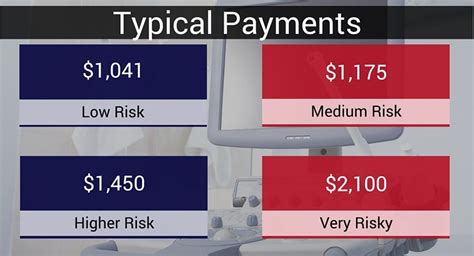Decoding Medical Equipment Financing Rates: A Comprehensive Guide
Securing the right medical equipment is crucial for healthcare providers, but the financial aspect can often be daunting. Understanding medical equipment financing rates is key to making informed decisions and avoiding costly mistakes. This guide will delve into the intricacies of these rates, helping you navigate the process effectively.
What Influences Medical Equipment Financing Rates?
Several factors contribute to the interest rates you'll encounter when financing medical equipment:
-
Credit Score: Your credit history plays a significant role. A higher credit score typically translates to lower interest rates. Lenders view a strong credit score as an indicator of lower risk.
-
Loan Term: The length of your loan impacts the rate. Longer loan terms generally mean lower monthly payments, but you'll likely pay more in interest over the life of the loan. Shorter terms lead to higher monthly payments but lower overall interest costs.
-
Loan Amount: The amount you borrow also influences the rate. Larger loan amounts might attract slightly higher rates, reflecting increased risk for the lender.
-
Type of Equipment: The type of medical equipment can influence the rate. High-value, specialized equipment may carry different risk assessments compared to more common items.
-
Lender: Different lenders have different lending criteria and risk tolerances. Shop around and compare offers from multiple lenders to find the most competitive rates.
-
Collateral: Offering collateral, such as existing equipment or other assets, can strengthen your application and potentially lead to better rates. This demonstrates a lower risk to the lender.
Types of Medical Equipment Financing
Understanding the different financing options available is critical:
-
Term Loans: These are traditional loans with fixed interest rates and repayment schedules over a set period. They offer predictability and stability.
-
Leasing: Leasing allows you to use the equipment without outright ownership. Monthly payments are typically lower than loan payments, but you won't own the equipment at the end of the lease term.
-
Lines of Credit: A line of credit provides access to funds as needed, allowing flexibility in managing your finances. Interest is typically charged only on the amount borrowed.
-
Vendor Financing: Some equipment vendors offer financing options directly. This can simplify the process, but it's crucial to compare rates with other lenders to ensure you're getting the best deal.
Tips for Securing Favorable Rates
-
Improve Your Credit Score: Before applying for financing, take steps to improve your creditworthiness. This will significantly increase your chances of securing a lower interest rate.
-
Shop Around: Don't settle for the first offer you receive. Compare rates and terms from multiple lenders to find the best fit for your needs and financial situation.
-
Negotiate: Don't hesitate to negotiate with lenders. You might be able to secure a lower rate or more favorable terms by highlighting your creditworthiness and the value of the equipment.
-
Understand the Terms: Carefully review all loan documents and understand the terms and conditions before signing any agreements. This includes interest rates, fees, and repayment schedules.
Conclusion
Navigating medical equipment financing rates requires careful planning and research. By understanding the factors that influence rates, exploring different financing options, and actively seeking the best terms, healthcare providers can make informed decisions that support their financial health and the provision of quality care. Remember, seeking advice from a financial advisor specializing in healthcare financing can provide invaluable support in this process.
